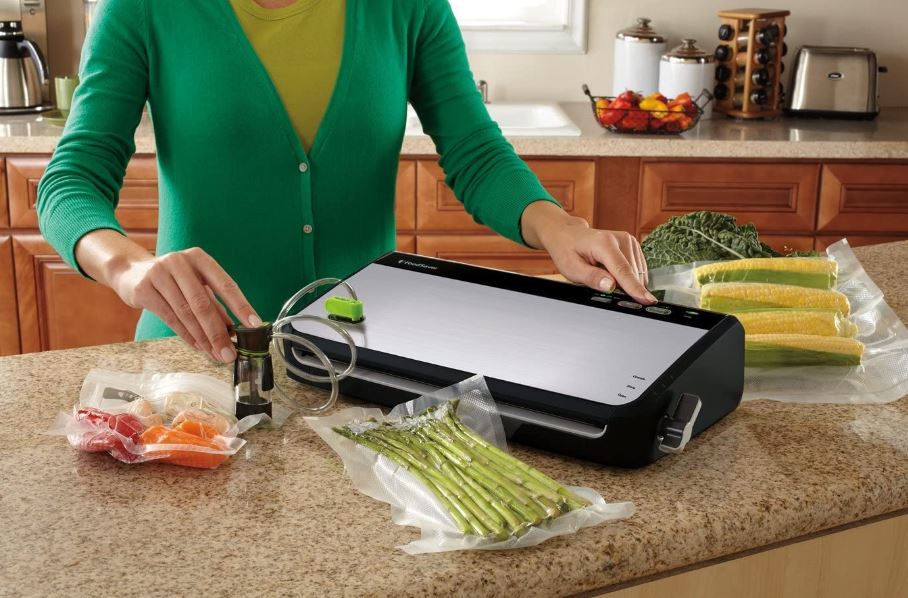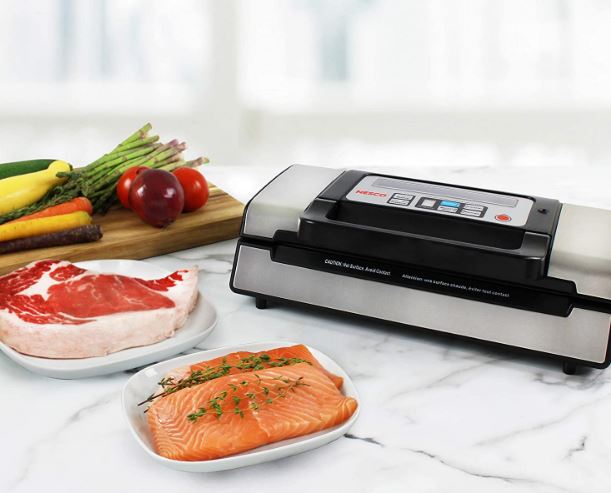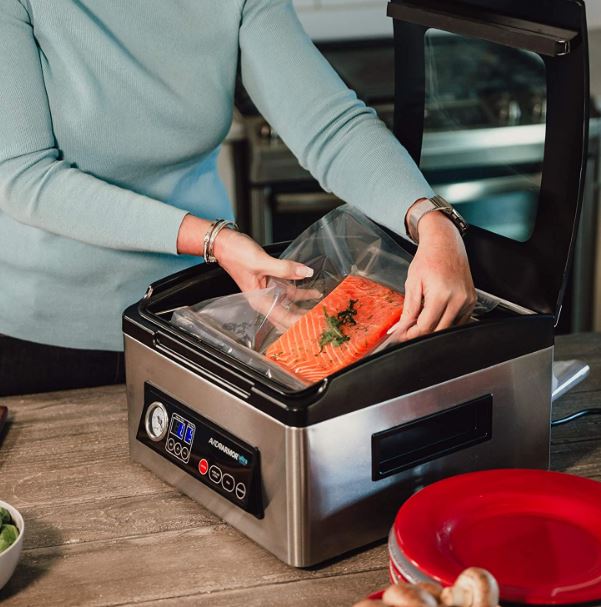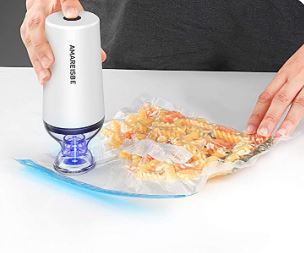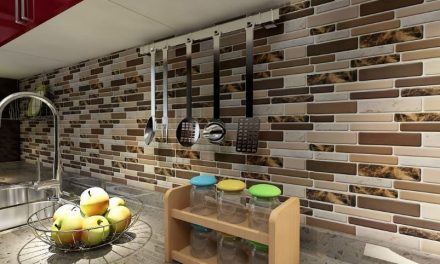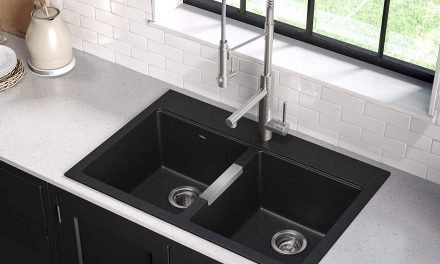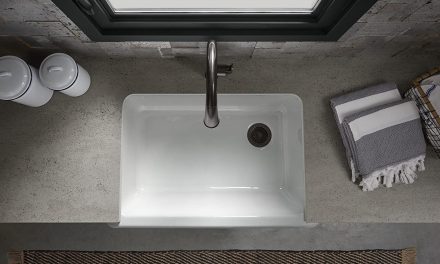Vacuum food sealers are a great way to preserve food, cutting down on waste and making food planning easier. They can be an excellent addition to your kitchen.
Basically, a vacuum sealer has two parts—the vacuum and the sealer. The vacuum removes the air from a bag, jar, or other container, and the sealer keeps the air out. This helps to keep food fresh, since oxidation is one of the things that makes food go bad. Vacuum sealers also help food last longer in the freezer, keeping freezer burn at bay.
Vacuum sealing can also be used to improve the effectiveness of marinades, and in sous vide cooking, where vacuum-sealed food is slowly cooked in a water bath.
Vacuum sealers give you another way to keep food fresh longer andanother way to cook. From keeping coffee beans, spices, and other dry goods fresh to marinades and pre-made meals, your culinary universe is wider with a vacuum sealer.
Types of vacuum sealers
There are three types of vacuum food sealers on the market: external, chamber, and handheld.
- Check out the bestselling vacuum sealers on Amazon.
- And check out the bags, too, while you’re at it!
External vacuum sealers
External vacuum sealers consist of a display, a sealer bar, and often an accessory port. The sealer bar (which is basically just a bag sealer) is attached to the base of the appliance with a hinge. Simply place the open side of a vacuum bag under the bar, press down, and the vacuum sealer will remove the air from the bag and seal it closed. For some models, you don’t even have to manually press down to vacuum seal. An accessory port takes the appliance to another level, allowing you to seal jars, containers, and more.
These vacuum sealers are great for home use. They’re affordable, available in several styles, and don’t take up too much counter space. External vacuum sealer bags, characterized by the rough texture of the open end, are readily available in a variety of sizes.
While external vacuum sealers are a great option for most people, they don’t work well with larger batches of food. If that’s something you need, a chamber sealer might be best for you.
Price range: $25-$300
Chamber vacuum sealers
These vacuum sealers have a display and a large chamber with a lid. The sealer bar is either attached to the lid or mounted in the chamber. Simply place the open side of a vacuum bag (or more than one, for larger models) over the bar and close the lid. The vacuum sealer will then remove the air and seal the bags.
Unlike suction-style external and handheld sealers, chamber sealers remove the air from both the bag and the chamber, keeping pressure equal and leaving liquids in the bags where they belong.
Chamber vacuum sealers are great for larger quantities of food, since they fit larger bags and you can often seal multiple bags at once. They’re excellent for sous vide cooking, stews, soups, and sauces.
The vacuum sealer bags used in chamber sealers are smooth-edged, since the sealer bar doesn’t need as good of a grip. As a bonus, chamber sealer bags are often cheaper than external sealer bags, too.
Beyond simply taking up more counter space, this type of sealer tends to be more expensive, as well, but it’s also very versatile. You can use a chamber sealer for more complicated techniques, like vacuum compression and infusing.
Bottom line? These vacuum sealers aren’t great for casual use, since they’re a significant cost in both money and space, and are more common for commercial uses. But if you’re serious about vacuum sealing or plan to seal large batches of food, a chamber vacuum sealer might be right for you.
Price range: $400-$1500
Handheld vacuum sealers
As the name suggests, you hold handheld vacuum sealers instead of putting them on a counter. You bring the sealer to the food, not the other way around. They can be electric (either battery powered or requiring an outlet) or manual. They come in two basic styles, one that looks like a small pump (seen below) and another that looks like a pistol. Like external sealers, they often have pulse buttons.
The real difference in operation is in the bags. While external and chamber vacuum sealer bags use heat to fully seal the bag, handheld vacuum sealer bags have a small sealing port. While they may not be quite as effective as external and chamber vacuum sealers, they will do a good job of removing air and keeping your food fresh.
Handheld vacuum sealers are great for small kitchens without a lot of counter space. They’re also portable, especially the battery-powered and manual varieties, allowing you to vacuum seal wherever you are. Depending on what model you choose, they’re pretty affordable, too.
They’re not great for large batches, though, and accessories may be limited, so if you want to seal lots of foods (and lots of kinds of foods) another type of vacuum sealer may be preferable.
Price range: $15-$100
What to look for in a vacuum sealer
The first thing to keep in mind when you’re looking for a vacuum sealer is how often you’re going to use it. If you’re vacuum sealing food every day, it might be worth having a larger model that isn’t as easy to store. Some vacuum sealers come with accessory sets that include everything from sealing trays to bag holders, all designed to make a vacuum sealing station more efficient. If you plan to explore sous vide cooking and really dig into everything a food sealer can offer, a more expensive, more complicated model may be right for you.
Look for models with simple displays. Even complex commercial vacuum sealers should be easy to use. Some foods (like liquids) can only be effectively sealed by more expensive styles of vacuum sealer, so make sure that the model you choose can do everything you want it to do.
But if you’re only getting started in the world of vacuum sealing and aren’t planning on vacuum sealing all the time, here are the most important things to look for:
- A simple and clear display will make your life (and your vacuum sealing) a lot easier. For most tasks, you shouldn’t need that many settings, but it’s helpful to find a model that alerts you when the sealing process is done.
- Check for bag availability. Do the vacuum seal bags come in all the sizes you want? Are bags readily available? Are they cost effective? A vacuum sealer isn’t worth much without bags to use it with.
- Does it come with all the accessories you need? Accessories can take your vacuum sealer to new heights if they’re available. Stick with popular name brands (Nesco, Ziplock, Foodsaver) to have the widest variety of options.
- A quiet sealer is probably preferable for most people.
- Vacuum sealers should be easy to handle. Look at the weight of the sealer as well as its dimensions to make sure it’s easy to store when you’re not using it.
A good, quality vacuum sealer for small-batch use in the home will run you about $50-$100.
Ease-of-use is important
Most vacuum sealers on the market will get the job done. The real difference comes down to ease of use. Some vacuum sealers are confusing to operate, have unclear displays, or require a lot of physical effort. A good vacuum sealer should be simple and easy to operate, with only as many options as it needs to get the job done. The best vacuum sealers for most people are lightweight and easy to store.
The only setting (besides ‘seal’) that a vacuum sealer really needs is a pulse button, giving you control over the pressure. This allows you to seal softer items, like muffins, without crushing them. While many commercial (and some domestic) vacuum sealers have customizable sealing, letting you set the pressure, most home cooks will find sealers with automatic programs easier to use.
Another important consideration is manual vs. automatic. Some handheld vacuum sealers are fully manual, more like small bicycle pumps. These models are cheaper but might take longer and require more physical effort. Other vacuum sealers might require you to use some amount of force in order for the seal to properly take. Keep in mind how difficult a model might be to use if pressing and holding an appliance would be hard for you.
Vacuum sealer accessories make sealers more useful
Once you’ve picked a food sealer, what can you do with it? With the basic sealer, of course, you can preserve a variety of foods. But that’s only the beginning of what a vacuum sealer can do. Accessories can really expand its functionality. Just make sure the model you choose is compatible with everything you need.
Here are some of the best accessories for your vacuum sealer:
- Vacuum seal storage containers are a great addition to your vacuum sealing repertoire. Just attach the accessory hose of your vacuum sealer to the top of these Tupperware-like containers, and sealing soft or wet foods and marinating meat is a breeze. They come in a variety of sizes for whatever you want to seal.
- The FoodSaver brand external vacuum sealer has special bottle stoppers that can remove the air from opened bottles of oil, vinegar, and even wine, making these a good alternative to an expensive wine preservation system. Just put in the stopper, attach the accessory hose, and you’re good to go.
- Like vacuum sealer storage containers, vacuum sealer jars have a port for vacuum sealers to connect to, allow you to remove air from the body of the jar. Keep sauces, jams, condiments, and more fresh for longer.
Are food vacuum sealers worth it?
There’s a lot you can do with a vacuum sealer, but will you use it? Only you can decide, but if you frequently struggle with food spoilage, a vacuum sealer will help you keep food for longer. And if you like sous vide cooking, you really can’t beat the ease of a vacuum sealer for that job. As a bonus, accessories really expand the uses of vacuum sealers, especially vacuum sealable storage containers.
For most people, a Nesco Deluxe Vacuum Sealer is a great option. But if you don’t want to spend that much to start, consider Mueller’s vacuum sealer, which costs half as much.
Whichever vacuum sealer you choose, don’t forget to buy a roll of sealer bags!

